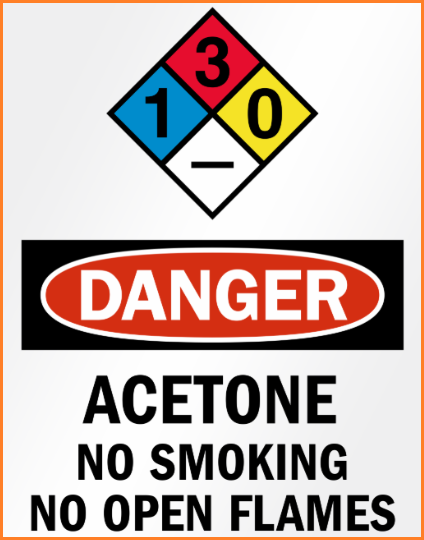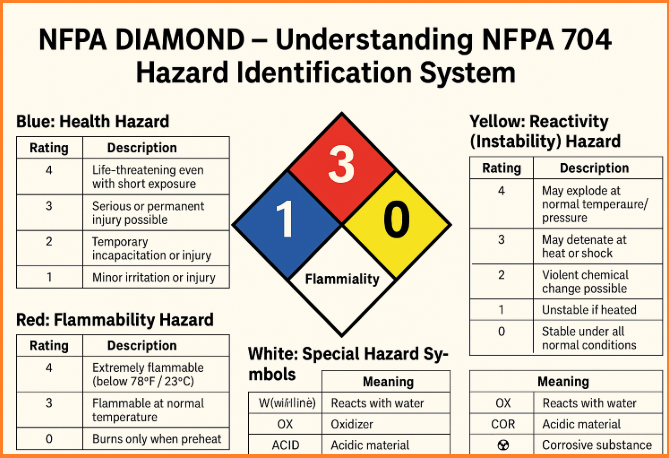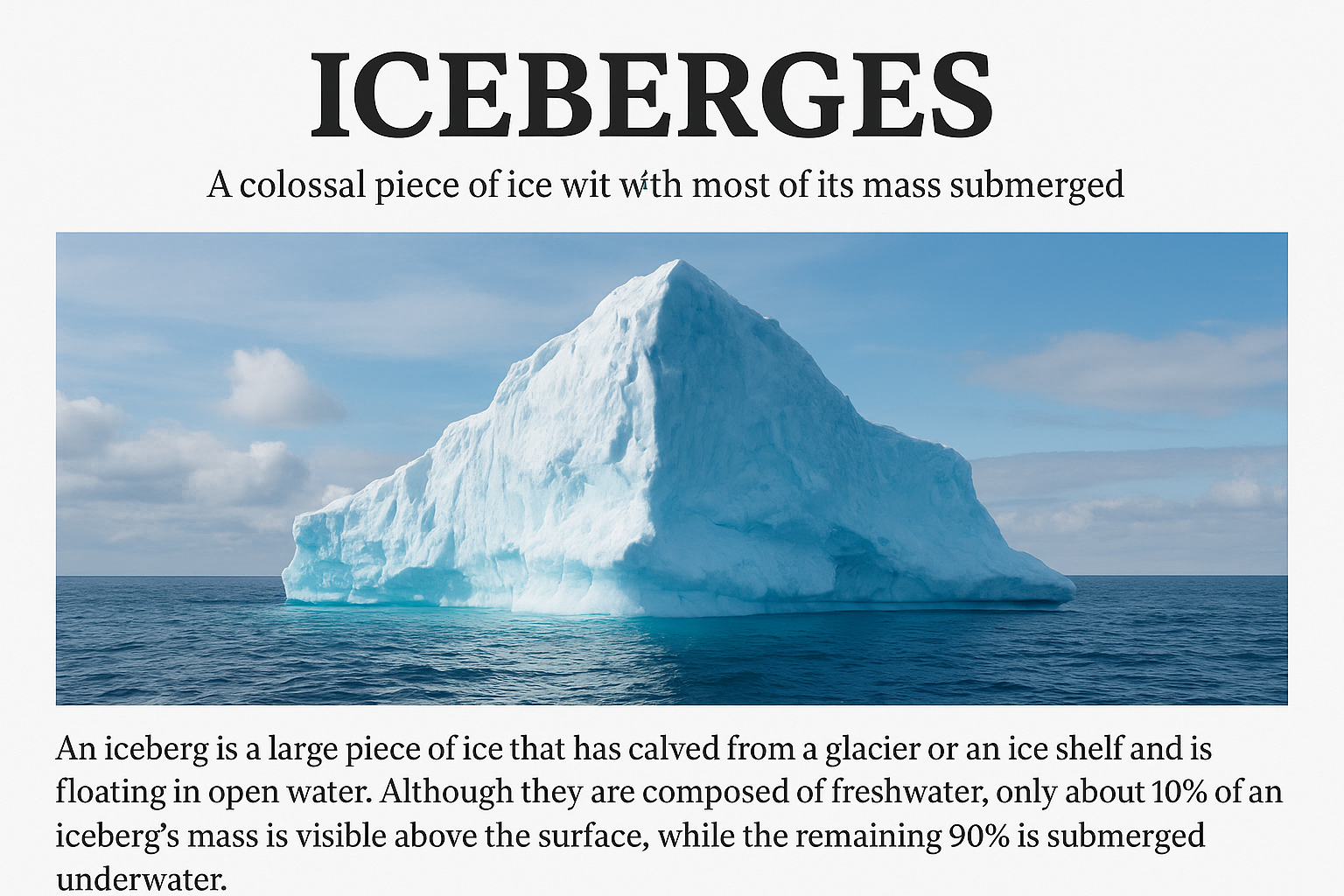The NFPA Diamond, officially known as NFPA 704, is a standardized system developed by the National Fire Protection Association (NFPA) for identifying the hazards of materials for emergency response. It is a simple, visual guide used widely in industrial facilities, laboratories, chemical storage areas, and workplaces that handle hazardous substances.
Contents
Purpose of NFPA 704
The NFPA 704 system provides quick, essential information to firefighters, emergency personnel, and safety workers at a glance. It communicates the health, flammability, reactivity, and special hazards of a substance, especially in the event of a fire or chemical spill.
Structure of the NFPA Diamond
The NFPA Diamond consists of four color-coded quadrants arranged in a diamond shape:
🔴
Red
Flammability
🔷 Blue Yellow 🔶
Health Reactivity
⚪ White
Special Hazard
Each quadrant contains a number (0–4) or symbol to indicate the degree or type of hazard.
🔵 Blue: Health Hazard
Indicates the level of health risk the substance poses to a person during exposure.
| Rating | Description |
|---|---|
| 4 | Life-threatening even with short exposure |
| 3 | Serious or permanent injury possible |
| 2 | Temporary incapacitation or injury |
| 1 | Minor irritation or injury |
| 0 | No significant health risk |
🔴 Red: Flammability Hazard
Shows how easily the material ignites or burns.
| Rating | Description |
|---|---|
| 4 | Extremely flammable (below 73°F / 23°C) |
| 3 | Flammable at normal temperature |
| 2 | Needs moderate heating to ignite |
| 1 | Burns only when preheated |
| 0 | Will not burn under normal conditions |
🟡 Yellow: Reactivity (Instability) Hazard
Indicates how likely the substance is to undergo chemical changes or explode.
| Rating | Description |
|---|---|
| 4 | May explode at normal temperature/pressure |
| 3 | May detonate with heat or shock |
| 2 | Violent chemical change possible |
| 1 | Unstable if heated |
| 0 | Stable under all normal conditions |
⚪ White: Special Hazard Symbols
This space contains symbols or letters that represent specific hazards not covered by the other three quadrants.
| Symbol | Meaning |
|---|---|
| W (with a line) | Reacts with water |
| OX | Oxidizer |
| ACID | Acidic material |
| COR | Corrosive substance |
| ☢ | Radiation hazard (non-standard) |
Note: The white quadrant may also be blank if no special hazards exist.
Example of NFPA Diamond
For acetone, the NFPA diamond might read:
- Blue (Health): 1 – Slight hazard
- Red (Flammability): 3 – Highly flammable
- Yellow (Reactivity): 0 – Stable
- White: Blank (no special hazard)
So the diamond would look like:

🏭 Where is NFPA 704 Used?
NFPA 704 signs are commonly found in:
- Chemical manufacturing facilities
- Laboratories
- Storage tanks or containers
- Warehouses
- Safety data sheets (SDS)
- Transport vehicles
🚨 Importance of NFPA 704 in Emergency Response
- Enables quick hazard identification by first responders
- Reduces reaction time during chemical spills or fires
- Helps ensure personal protective equipment (PPE) is selected properly
- Supports better risk assessment and planning
⚖️ Compliance and Standardization
The NFPA 704 system is recognized under U.S. fire codes and often integrated with OSHA standards and Hazard Communication Programs. While NFPA 704 complements GHS (Globally Harmonized System) used in labeling and SDS, it is mainly intended for emergency response, not workplace chemical classification.
The NFPA Diamond is a vital safety tool that provides at-a-glance hazard information to protect life, property, and the environment. By understanding and applying the NFPA 704 system, workers and responders can act swiftly and appropriately in hazardous situations.





